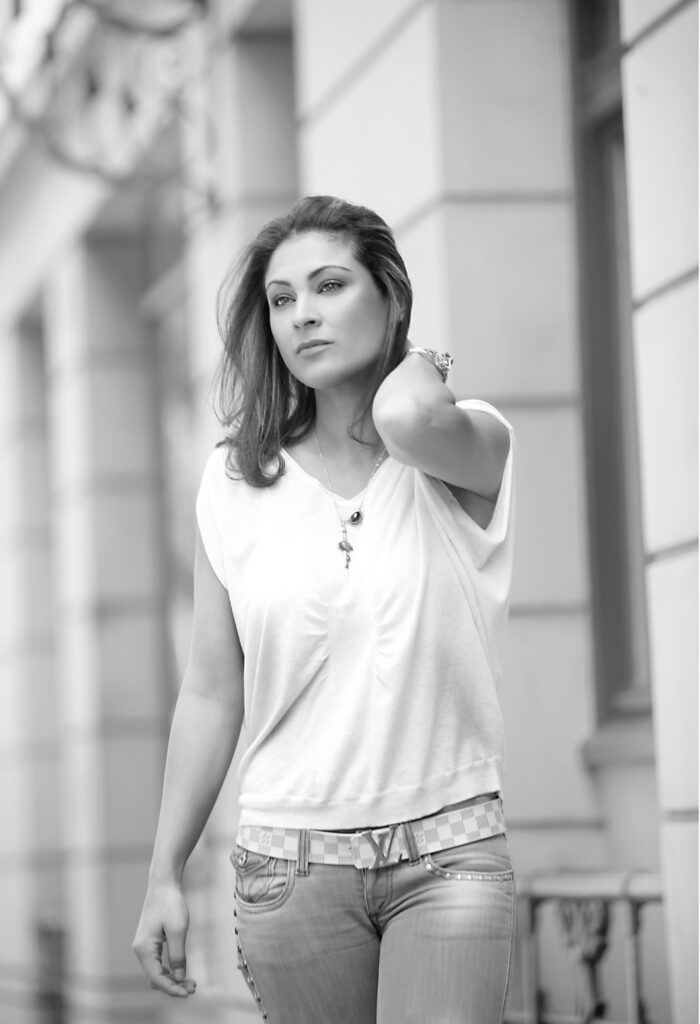
Coffee is special in cultures worldwide, with unique rituals and traditions. Among them, Turkish coffee stands out as one of the oldest and most revered styles of coffee preparation. Its history is as rich as its flavor, weaving through centuries of cultural exchange, trade, and tradition. Let’s journey to uncover Turkish coffee’s fascinating origin and history.
Turkish Coffee
The Birth of Turkish Coffee
Traditional Preparation
What sets Turkish coffee apart is its unique preparation method. The coffee beans are finely ground into a powder, almost resembling cocoa. This fine grind allows for a rich and robust flavor to develop. Then, the coffee is brewed in a special pot called a “cezve” or “ibrik.” Water and sugar, if desired, are added to the cezve, and the mixture is heated slowly over a low flame. The result is a thick, velvety concoction served in small cups without straining, allowing the grounds to settle at the bottom.
Cultural Significance
Turkish coffee is not merely a beverage; it’s a cultural ritual steeped in tradition and symbolism. It’s a symbol of hospitality, as offering a cup of coffee to guests is a common practice in Turkish culture. Moreover, the preparation and serving of Turkish coffee are governed by etiquette rules, such as never filling the cup to the brim to leave room for conversation and respecting the order in which the cups are served.
Coffeehouses played a vital role in Ottoman society, serving as gathering places for intellectuals, artists, politicians, and everyday citizens. These establishments became centers of cultural exchange and debate, where ideas were exchanged over cups of rich, aromatic coffee.


Evolution and Spread
Over time, Turkish coffee spread beyond the borders of the Ottoman Empire, becoming popular throughout the Middle East, North Africa, and parts of Europe. Each region adopted variations and customs, adding nuances to the age-old tradition.
Influence on Modern Coffee Culture
Despite the rise of modern coffee brewing methods, Turkish coffee continues to hold a special place in the hearts of coffee lovers worldwide. Its intense flavor, ritualistic preparation, and cultural significance have ensured its survival.
The history of Turkish coffee is a testament to the enduring power of tradition and cultural exchange. From its humble origins in the Ottoman Empire to its status as a beloved beverage enjoyed worldwide, Turkish coffee has left an indelible mark on coffee culture. So, the next time you savor a cup of Turkish coffee, take a moment to appreciate the centuries-old tradition and the rich history it represents.
Unraveling the Mystique of Turkish Coffee Fortune Reading
The Tradition of Coffee Cup Fortune Telling
Turkish coffee fortune reading, known as “final” in Turkish, has deep roots in the culture and traditions of the Middle East and Eastern Europe. It is believed to have originated in the Ottoman Empire, where it became a popular pastime among women. The process involves drinking a cup of Turkish coffee until only the sediment remains at the bottom, which forms intricate patterns and shapes.
How It Works
The art of coffee cup fortune reading relies on intuition, symbolism, and interpretation. After finishing their coffee, the drinker rotates the cup several times to allow the sediment to create patterns on the inside. The cup is then placed upside down on the saucer to cool. Once cooled, the fortune teller (often a friend or family member) examines the patterns and shapes left by the coffee grounds to interpret the drinker’s future.

Interpreting the Symbols:

1. Animals: Animals such as birds, dogs, or snakes may symbolize different aspects of the drinker’s personality or experiences.
2. Shapes: Circles, triangles, or squares can represent different aspects of life, such as love, wealth, or health.
3. Letters: Letters or numbers may appear on the coffee grounds, offering clues or messages about the drinker’s future.
4. Lines: Lines or patterns formed by the coffee grounds can indicate the flow of energy or the direction of events in the drinker’s life.
The Interpretation Process:
Cultural Significance:
Turkish coffee fortune reading is more than just a fun pastime; it is deeply ingrained in the cultural fabric of many societies. It provides a sense of connection, community, and spiritual guidance, offering comfort and reassurance in uncertain times.
Turkish coffee fortune reading is a fascinating blend of tradition, intuition, and symbolism. Whether you believe in its mystical powers or not, there’s no denying the allure of sipping a cup of rich Turkish coffee and discovering what the future may hold in its swirling patterns and shapes. So, the next time you enjoy a cup of Turkish coffee, why not try your hand at fortune telling and see what secrets the coffee cup may reveal?
The Global Tradition of Coffee Cup Fortune Reading
Introduction:
While Turkish coffee fortune reading may have originated in the Ottoman Empire, its influence has spread widely, becoming a cherished tradition in many countries worldwide. From the Middle East to Eastern Europe and beyond, people have embraced the mystical art of interpreting coffee cup patterns to gain insights into their futures. Let’s explore some of the countries where this ancient tradition thrives.
Turkey:
As the birthplace of Turkish coffee, it’s no surprise that Turkey remains one of the foremost coffee cup fortune-reading practitioners. In Turkish culture, fortune-telling over coffee is a tradition passed down through generations. It’s often a social activity, with friends and family gathering to share stories and seek guidance from the patterns left in their coffee cups.
Greece:
In Greece, coffee cup fortune reading, Kathmandukafemandou,” is popular, especially among older generations. Greek coffee, similar to Turkish coffee, is brewed using finely ground coffee beans and served in small cups. The art of Kathmandu involves interpreting the patterns and shapes left by the coffee grounds to provide insights into the drinker’s future.
Iran:
In Iran, the practice of coffee cup fortune reading is known as “Fale Ghahveh,” where “fale” translates to “omen” or “fortune” and “ghahve” refers to coffee. This ancient tradition is significant in Persian culture and is often woven into social gatherings, celebrations, and intimate conversations.
Fale Ghahveh follows a ritual similar to other cultures, practicing coffee cup fortune reading. The brewed coffee is served in small cups, allowing the sediment to settle at the bottom. The drinker then rotates the cup several times, allowing the grounds to create unique patterns and shapes.
Experienced fortune tellers, known as “Ghahve-Gozar,” carefully examine these patterns, interpreting them to provide insights into the drinker’s future. The interpretations often draw from Persian symbolism, mythology, and cultural beliefs, adding a distinct flavor to the practice.
Fale Ghahveh is more than just a means of divination; it’s a cherished tradition that fosters connection, community, and conversation. Whether shared among family members, friends, or strangers, the experience of Fale Ghahveh transcends generations, offering a glimpse into the mysteries of fate and destiny.
In modern Iran, Fale Ghahveh remains a beloved pastime, with cafes and gatherings dedicated to the art of coffee cup fortune reading. It serves as a reminder of the rich tapestry of Persian culture and the enduring allure of seeking guidance from the patterns in a cup of coffee.

Lebanon:
Lebanon boasts a rich tradition of coffee culture and fortune-telling over a cup of coffee is deeply ingrained in Lebanese society. Known as “tasseography,” coffee cup fortune reading in Lebanon involves similar rituals to those in Turkey and Greece. It’s often practiced to bond and connect with loved ones during social gatherings, such as weddings or family gatherings.
Egypt:
Coffee cup fortune reading, or “tasseomancy,” is a centuries-old tradition in Egypt. Egyptian coffee, strong and aromatic, is brewed using a similar method to Turkish coffee. Sk fortune tellers carefully examine the patterns left in the coffee grounds and offer insights and guidance to those seeking answers about their futures.
Russia:
In Russia, coffee cup fortune reading is known as “telling fortunes on the grounds.” While tea is more commonly consumed in Russia, fortune-telling over coffee has recently gained popularity. Russian coffee cup readings often incorporate traditional Russian folklore and symbolism, adding a unique twist to the practice.
Coffee cup fortune reading transcends borders and cultures, uniting people worldwide in a shared appreciation for the mystical and the unknown. Whether in Turkey, Greece, Lebanon, Egypt, Russia, or beyond, the tradition of seeking insights into the future through the patterns in a coffee cup continues to captivate and inspire. So, the next time you enjoy a cup of coffee, why take a moment to peer into its depths and see what secrets it may reveal?
The Art of Brewing Turkish Coffee: A Time-Honored Tradition
Ingredients:
To brew Turkish coffee, you’ll need a few essential ingredients:
1. Freshly roasted and finely ground coffee beans: Turkish coffee requires an extra-fine grind, almost powder-like.
2. Water: Use fresh, cold water for the best results.
3. Sugar (optional): Depending on your preference, add sugar to the coffee before brewing.
Equipment:
Traditional Turkish coffee brewing requires specific equipment:
1. Cezve (Ibrik): A small, long-handled copper or brass pot specially designed for brewing Turkish coffee.
2. Coffee grinder: Use a grinder capable of producing an ultra-fine grind to achieve the desired consistency.
3. Small cups: Turkish coffee is served in small cups without handles, allowing for easy sipping.
Steps to Prepare Turkish Coffee:
1. Measure the Water: For each cup of coffee, measure one representative cup of cold water using the coffee cup you’ll serve.
2. Add Coffee and Sugar (Optional): Place the desired amount of finely ground coffee into the cezve, typically one heaping teaspoon per cup. Add sugar if desired, adjusting the amount to taste.
3. Mix and Heat: Stir the coffee and water mixture gently until the coffee grounds are fully incorporated. Place the cezve over low heat and slowly bring the mixture to a simmer. Be careful not to boil the coffee, as it can affect the flavor.
4. Froth (Optional): As the coffee heats, a frothy layer, known as “kaimak,” may form on the surface. Some prefer to scoop this froth and distribute it evenly among the cups before serving for added richness.
5. Serve: Once the coffee reaches a simmer and the grounds settle, pour the coffee into the small cups, ensuring that each cup receives equal liquid and sediment. Please allow the coffee to pay for a few minutes before serving to allow the grounds to sink to the bottom.
6. Enjoy: Turkish coffee is traditionally enjoyed slowly, sipped, and savored to appreciate its robust flavor and rich aroma. It’s often served with a glass of water to cleanse the palate between sips.
The Intrigue of Turkish Coffee Fortune Telling: A Girl's Journey into the Unknown
Cultural Connection:
For many girls, Turkish coffee fortune-telling is more than just a pastime; it’s a cultural tradition deeply rooted in family and community. From a young age, girls may witness their mothers, grandmothers, or older sisters partaking in this ancient ritual, passing down the art of interpreting coffee cup patterns from generation to generation. Through these shared experiences, girls forge connections with their cultural heritage, gaining insights into their roots and the traditions that define their identities.
Sense of Wonder and Imagination:
Turkish coffee fortune-telling sparks the imagination and ignites a sense of wonder in girls as they peer into the depths of their coffee cups, searching for clues about what the future may hold. The intricate patterns and shapes left by the coffee grounds offer endless possibilities, inviting girls to dream, speculate, and ponder the mysteries of fate. In a world of uncertainty, Turkish coffee fortune-telling provides a sense of enchantment and intrigue, allowing girls to explore the unknown with curiosity and optimism.
Empowerment and Self-Reflection:
As girls grow and mature, Turkish coffee fortune-telling can be a powerful tool for self-reflection and empowerment. The insights from a coffee cup reading may offer girls guidance, validation, or a new perspective on their lives and choices. Whether facing challenges, making decisions, or pursuing their dreams, girls can draw strength and inspiration from the symbols and messages revealed in their coffee cups, empowering them to embrace their unique paths with confidence and courage.
Bonding and Connection:
Turkish coffee fortune-telling often occurs in intimate settings, surrounded by loved ones and friends. For girls, these shared moments of bonding and connection hold profound significance, fostering a sense of belonging and camaraderie. Through the laughter, storytelling, and heartfelt conversations accompanying a coffee cup reading, girls strengthen their relationships, deepen their connections, and create cherished memories that will last a lifetime.

- TAGS ― Featured, Home-Influencer, Stories

Lavender, Nature’s Timeless Treasure; Exploring the Benefits of Lavender
Lavender, scientifically known as Lavandula, is a Lamiaceae family herb, including mint, sage, and rosemary.

Elevate Your Living Space: 26 Opulent Ways to Transform Your Home into an Elegantly Coastal Paradise
Venturing to transform your home into a modern coastal paradise is an exciting endeavor that requires detailed consideration and a discerning eye for luxury.

Elegance Unveiled: A Guide to Wearing Jewelry with Luxury and Sophistication
In style and sophistication, jewelry is a potent tool to enhance a woman’s elegance and personal flair. The transformative power of the right pieces cannot be understated.
instagram:
Error: No feed found.
Please go to the Instagram Feed settings page to create a feed.



Thanks so much for the tips both in the blog and on your YouTube channel. As a new Interior Design student, I find them to be incredibly helpful, interesting, and inspirational. Keep up the great work!
I love reading your blogs and watching your video. I am really impressed by the way you are doing business and I am just inspired by it!
I’ve just discovered your Youtube channel, and I love it! Thanks for sharing your content and the day and life of a designer! Great tips!